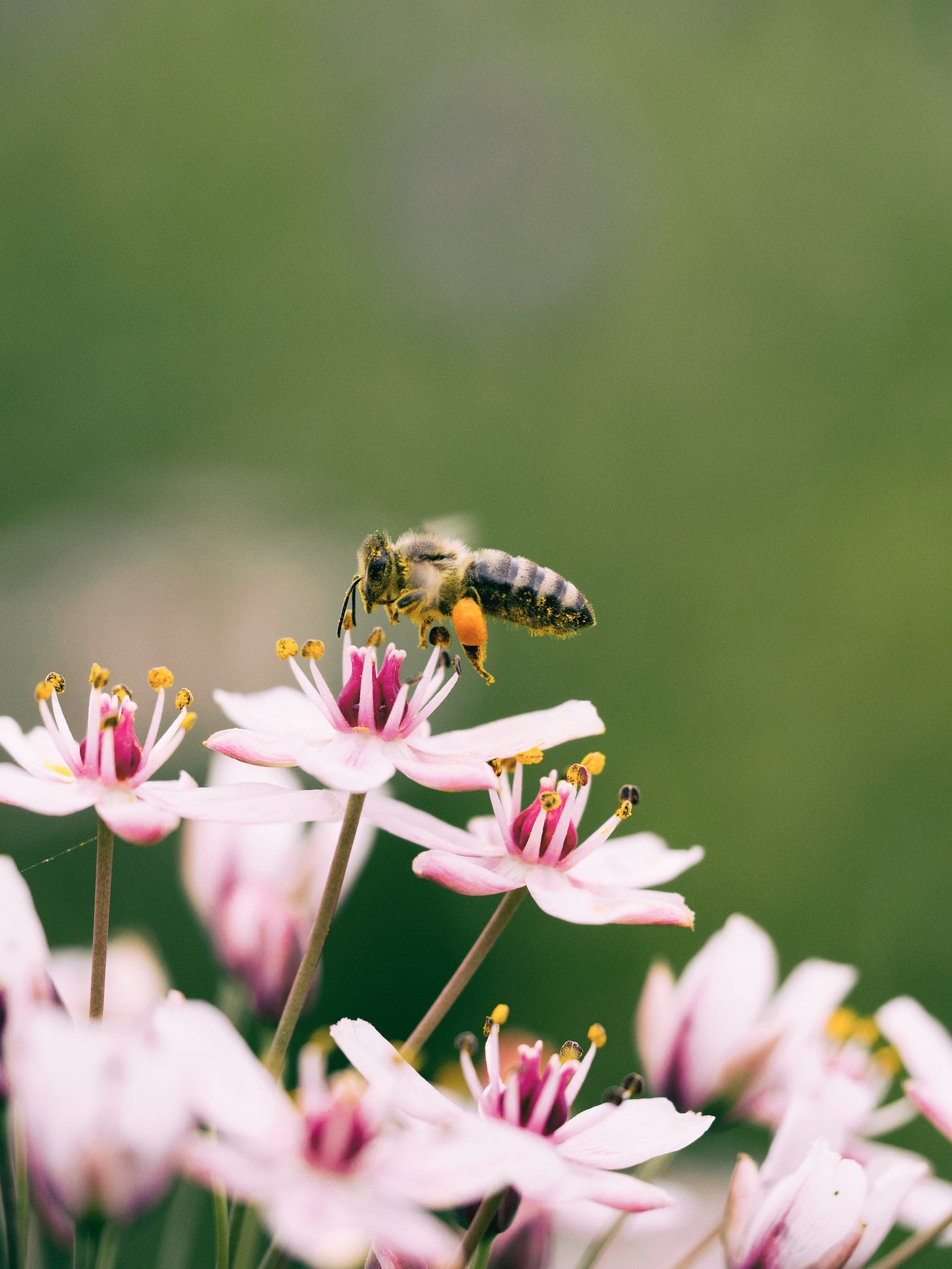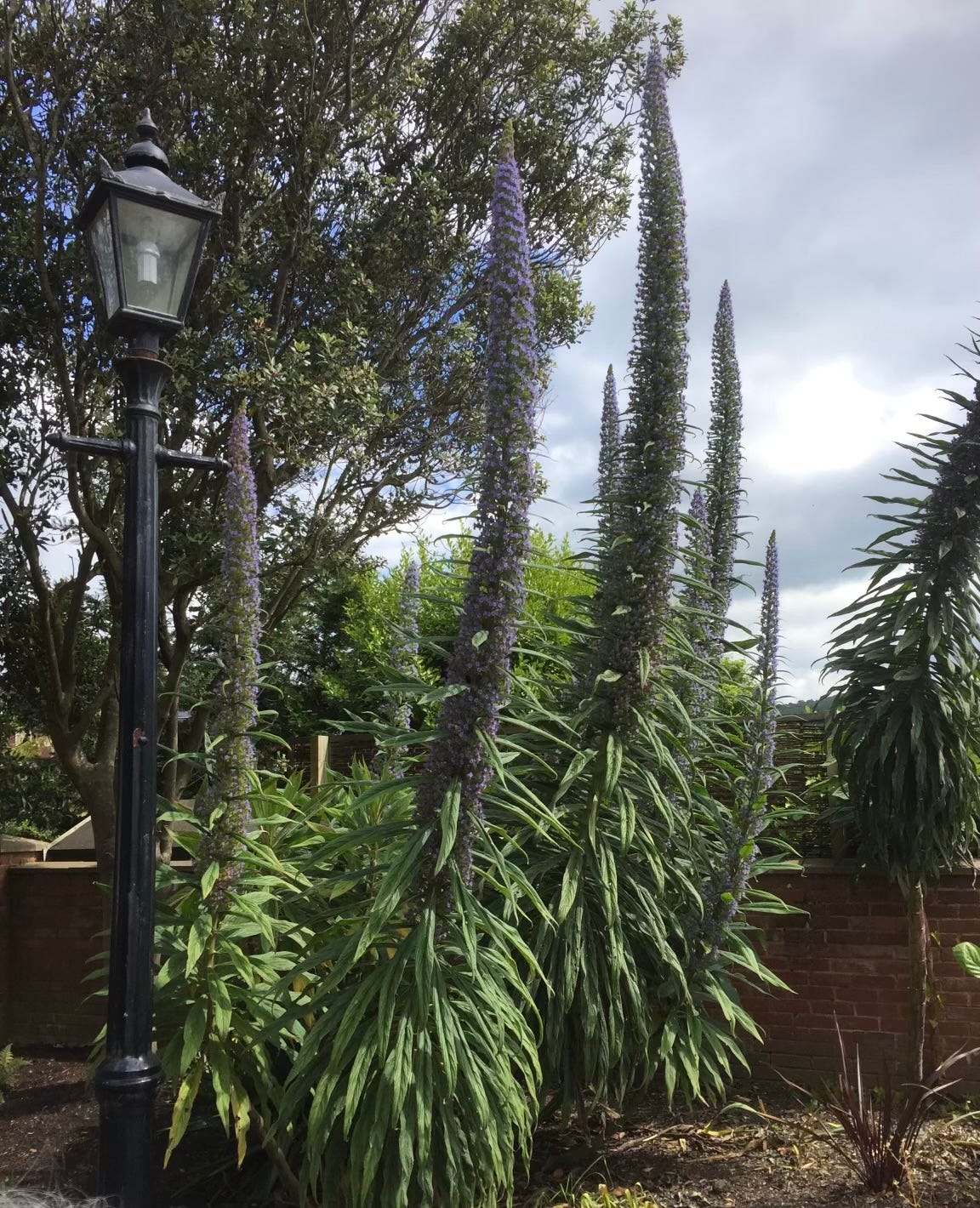Bee supportive
Pollinating insects need our help. Planting for pollinators should be a no-brainer.
A short post, but an important one.
In our local town garden there are lots of these towering plants: echium pininana, or giant viper’s bugloss.
They are huge - see the lamp post on the left for a bit of scale - and when in flower you can hear the bees and hoverflies feeding from 50 yards. They are all a-buzz. Except this year, they’re not. Walking past them last week the bee-noise was noticeable by its absence. We stood in front of them, searching for those buzzy little creatures. On the whole clump, we counted 15. In previous years there would be hundreds, literally hundreds of bees and hoverflies covering these flower spikes. There’s a lot of talk of loss of pollinators, and we’ve been very aware of of this, but this unexpected silence really stopped us in our tracks.
The dry weather and spending time in the garden has brought home the same truth. Whether it was the long, cold spring I don’t know, but the numbers seem to be much lower. Usually we are accompanied by the warm hum of nectar sipping insects whenever we are in the garden, today it’s just the occasional buzz from a passing bee, and so far this year I have seen only small white and holly blue butterflies - in very low numbers - usually the borders are alive with them visiting plants - Meadow Brown, Red Admiral, Peacock and Small Tortoiseshell have all been abundant in the past. Not so far tis year. This spring we haven’t seen a Brimstone or an Orange Tip in the garden. It’s not just that we are seeing these species less frequently, some of them we are not seeing at all, and that’s a worry.
So, we are thinking again about what we can plant for next year to encourage more. We have always thought of ourselves as wildlife friendly, and particularly insect friendly, but we have never planted deliberately for pollinators, and clearly we are not doing enough to help. Our rather haphazard gardening style is going to have to change. More flat, daisy-like flowers, the umbels of the cow-parsley family, fragrant attractors like honeysuckle and stocks, wild flowers if we can get them to grow, and then there is the added complication of growing plants that can cope in these hot, dry conditions for days on end plus a cold, wet winter. We’re using the RHS list of Plants for Pollinators to guide our planting for all four seasons and will be starting in earnest in the autumn, in the hope that we will give those little busy life-enhancers a flying start in 2024. The RHS (Royal Horticultural Society) list is very comprehensive and covers trees and shrubs as well as perennials and annuals. There’s such a lot of choice, there’s really no excuse for not finding room for a few.
This Guardian article from 2021 discusses the global fall in pollinators and what it may mean - none of it good, so as many of us as possible need to do our bit to support them in our small way. Do you have plants that are particularly successful in attracting bees and hoverflies? What’s working in your garden?





We've noticed the same, not only in the garden but on the allotment too. It's more obvious to those non-gardeners who have cars because windscreens are clearer for longer! There was a time in the summer when cleaning the car windscreen was a weekly chore, not so any longer. We have planted and also left clumps of nettles in borders in the garden and the allotment. One patch next to the veggies is deliberately just left wild. Whilst we weed at the allotment, we don't in the garden, preferring to let the wildflowers that settle stay, as long as we aren't tripping over them. Adding water helps as do having plenty of cover available. We don't use insecticides, even on the allotment, it's as organic as we can make it when we have neighbours who spray everything in sight. Finally, we have planted hebe's which they seem to love too.
We live in a flat and no longer have a garden, so my enjoyment comes from observing others spaces . Thankfully Dundee has excellent municipal planting , including wild flowers , so I will keep an eye out for pollinators.